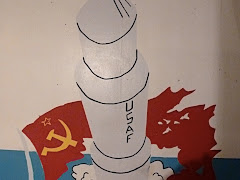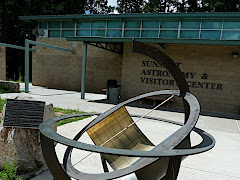antje
Not so long ago we were leading an easy life of sophisticated urbanites in a rented Leather District loft in Boston. We were cultured people. Or at least we tried to be in a city that goes to sleep at 10pm, wakes up before sunrise and then complains that the hip crowd has moved to New York. Mother nature in its infinite wisdom did not give us genes for music, but it endowed us with enough talent for random hacking that we could afford to attend live performances on a regular basis.
hypocrisy
Natalia has a problem with Jefferson. I kind of do as well. Usually I am way more forgiving. From my experience people are almost always better than their beliefs and political convictions. The case with Jefferson is the opposite: his views and beliefs are much better than what we perceive as his real persona. And that’s the crux of the matter. If one wants to stretch casuistry, it might be possible to defend your average American 18th century slave owner. Different times, different sensibilities. But an average slave owner did not engage in penning all men are created equal kind of sentences. An average slave owner didn’t consider life, liberty and pursuit of happiness to be unalienable rights. And he didn’t refer to slavery as an abominable crime a moral depravity, a hideous blot.
silo

There is something in South Dakota that can decide the fate of the world. Scratch that. There was something there. It’s just a national historic site now. A museum staffed by national park rangers preserving a launch control center and a silo hiding 18 meters long, slender, white missile. Which used to be topped with a 1.2 megaton warhead. Nothing to sneeze at if you consider that the entire WWII used between 2 and 6 megaton of explosives and that includes 20 kiloton nuclear bombs detonated in Hiroshima and Nagasaki.
time

Despite all the talking about inevitability of its flow, time is actually quite a flexible concept. We are driving east on the interstate 90 and out of a sudden there is a sign: Central Time Zone. We didn’t cross any state borders and - judging by the total blackness on both sides of the highway - we are in the middle of nowhere. And without much warning one hour of our day is gone. I suppose middle of nowhere makes sense for a time zone change. And the hour that we just gave up wasn’t ours to keep. We borrowed it in July when driving through similarly empty Texas. Although why in South Dakota the time zone change line isn’t straight is beyond me - there are only 4 states in the Union with fewer people per square mile.
brick
Contrary to the popular opinion American Midwest is a great place to live if you are looking for an urban environment: Omaha in Nebraska, Sioux City and Dubuque in Iowa, Madison and Milwaukee in Wisconsin to name just a few that we’ve passed. Even Chicago - although The Windy City is obviously in a league of its own. Incidents of history made them busy industrial towns at the time when brick was the nonflammable material of choice. The warehouses and factories had to be built near city centers. Transportation was either slow, by horse drawn wagons, or inflexible by rivers and trains. Just-in-time production has been a thing of the future missing the crucial component: a real-time inventory tracking. One needs computers for that and Victorian inventors somehow have not progressed from theory to practice. Hence the need for large space devoted to storing raw materials, components and finished products around factories. What results are solemn permanent structures: large enough to impress and provide some backbone to the city grid. Small enough not to intimidate unsuspecting pedestrians.
them
Poles - among other things - gave the world praxiology: a science of efficient action. For Americans it’s not a science. They are just pragmatic. That does not go well with Poles. Or the majority of other nations. I am reminded about the pragmatism when reading about how North and South Dakota got into the union. Both at the same time when population swelled temporarily as result of gold discovery. One Benjamin Harrison who happened to be an American president at that time decided to shuffle the papers to obscure which state got created first. Simple solution to a potentially annoying problem. Maybe too simple.
privacy
Do you want me to take a photo of you two?, she asks. No, thank you., I shake my head. She must be blind and deaf because she yells: is it a yes or a no? Yet she is ready to jump out of her car and walk 20 yards just to take our picture. How rude of us to decline. I am getting tired of the aggressive politeness and hospitality offered here. I don’t like to trust my camera to strangers. I don’t need a proof I visited various attractions together with Damian. And, more importantly, I am used to a different protocol: it’s the people who intend to have their pictures taken that initiate the conversation. And they apologize profusely for invading privacy first.
automobile
Pioneer Auto Show in Mudro, South Dakota is a genuine road side attraction. Row after row of early cars. Building after building of period pieces illustrating life on the plains in the first half of the 20th century. A huge barn full of tractors. Collection of motorcycles including one that belonged to the King. One of the first custom made houses on wheels a.k.a. RV. It’s all dusty and the smell reminds me of my grandparents’ attic - not necessarily in a good way. It sorely needs money: audio narration mentions cars absent from exhibits - probably sold to help the site survive. It sure could use some public funding and a professional curator to de-clutter displays and put them in historical context.
fossils
Extinct animals, discontinued cars and disarmed rockets meet their end at the Great Plains. Grass covers many a secret and is a great backdrop for modern art installations. You get extra points for confounding future archeologist: just to think that we may know as little about Stonehenge as they will deduce about Carhenge. In the 19th century prairie provided in abundance: land was parceled out to whoever would claim it, bones were dug up and carted off to whichever museum sponsored the dig. Military installations served the immediate purpose of suppressing native population.
sculpture
Just to be clear: I am not a big fan of the representational art. I feel that the era of cameras requires a painter to look beynd the obvious. The same applies to sculptures even if the sculpture in question is the size of a small mountain. Even if the mountain is not so small. That said Mt. Rushmore was not supposed to be an art piece. Or at least not just an art piece. It became an altar of secular religion of americanism. And an allegory of everything good and bad about America. It was conceived as a marketing stunt: to attract visitors to the unquestioningly beautiful Black Hills of South Dakota. It was designed by a Ku Klux Klan member and it occupies a land that happened to fall under American control in less than savory circumstances. It was financed largely by federal tax dollars in a good old tradition of senators syphoning money to their states to reduce the waste on federal level. It was constructed with typically American combination of ingenuity and brute force: precision tools and dynamite. There were obstacles that were overcome: when Jefferson’s visage cracked and had to be blasted off, it was aptly recreated behind Washington’s left ear. And as any popular idea the Mt. Rushmore spurred the healthy competition. Works are under way on Crazy Horse Memorial nearby, which is way bigger and probably will turn out no less ugly than its rival.